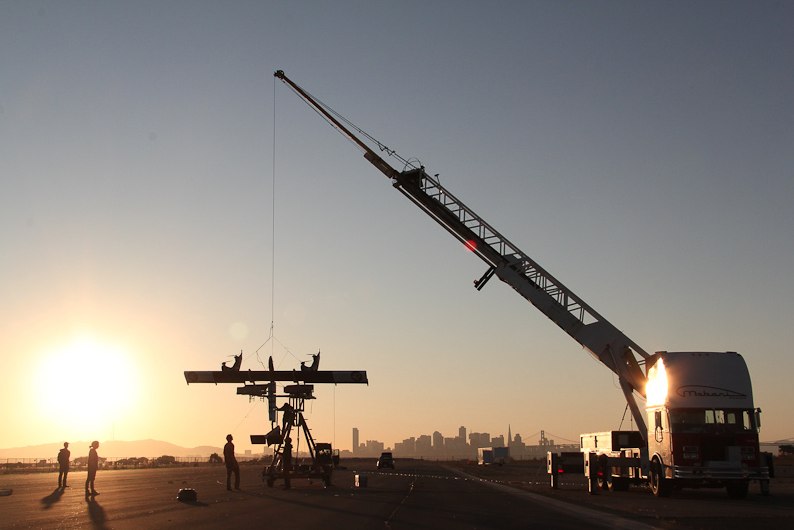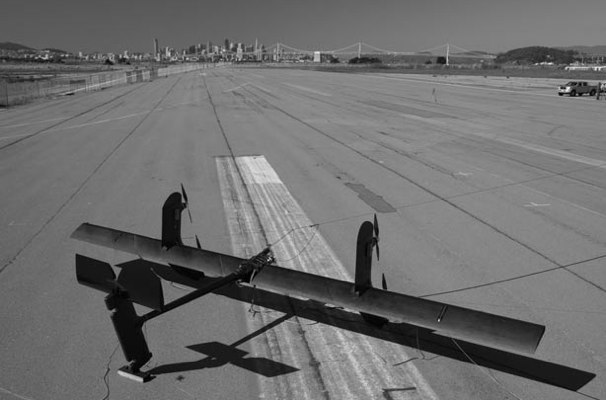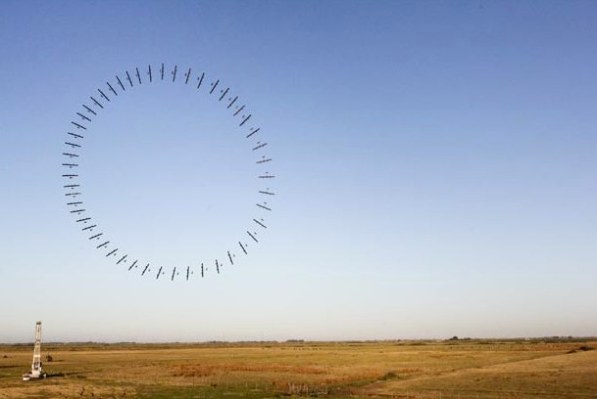Flying a kite to produce power may conjure up images of Ben Franklin, who sought to prove lightning was electric. Makani Power releases a turbine blade into the air, seeking to harness wind energy at higher altitudes.
The Makani Airborne Wind Turbines, which resemble mini airplanes, are launched when wind speeds reach 3.5 meters per second. Rotors on each blade help propel it into orbit, and double as turbines once airborne. The blades are tethered to the ground with a cord that delivers power to throw them into the sky and receives energy generated by the turbines to be sent to the grid-connected ground station.

Once in the air, the wing takes on a circular flight path, perpendicular to the wind’s direction. The crosswind hitting the rotors can pack more than 10 times the actual wind speed, and the blade can adjust position to meet it. Wind speeds can generally be twice as fast at altitude than near ground level as well, making the airborne blade potentially more powerful than ground-based turbines. Their light weight also makes them cheaper to produce than traditional turbines, and maintenance work can be performed on the ground.
When wind speeds drop below nine miles per hour, the blade shifts to hover mode and is reeled in to dock at the ground station.

The company was awarded $3 million from the Department of Energy’s ARPA-E program, and has also received $20 million in funding from Google.
While these turbines have potential, they are still being tested. Makani plans to construct larger wings that can reach heights of 1,600 feet and power 600 homes. The company’s current timeline for the largest prototype is 2013, with hopes of starting commercial production two years later.
Watch one of the test flights here:
Photos by Makani Power
